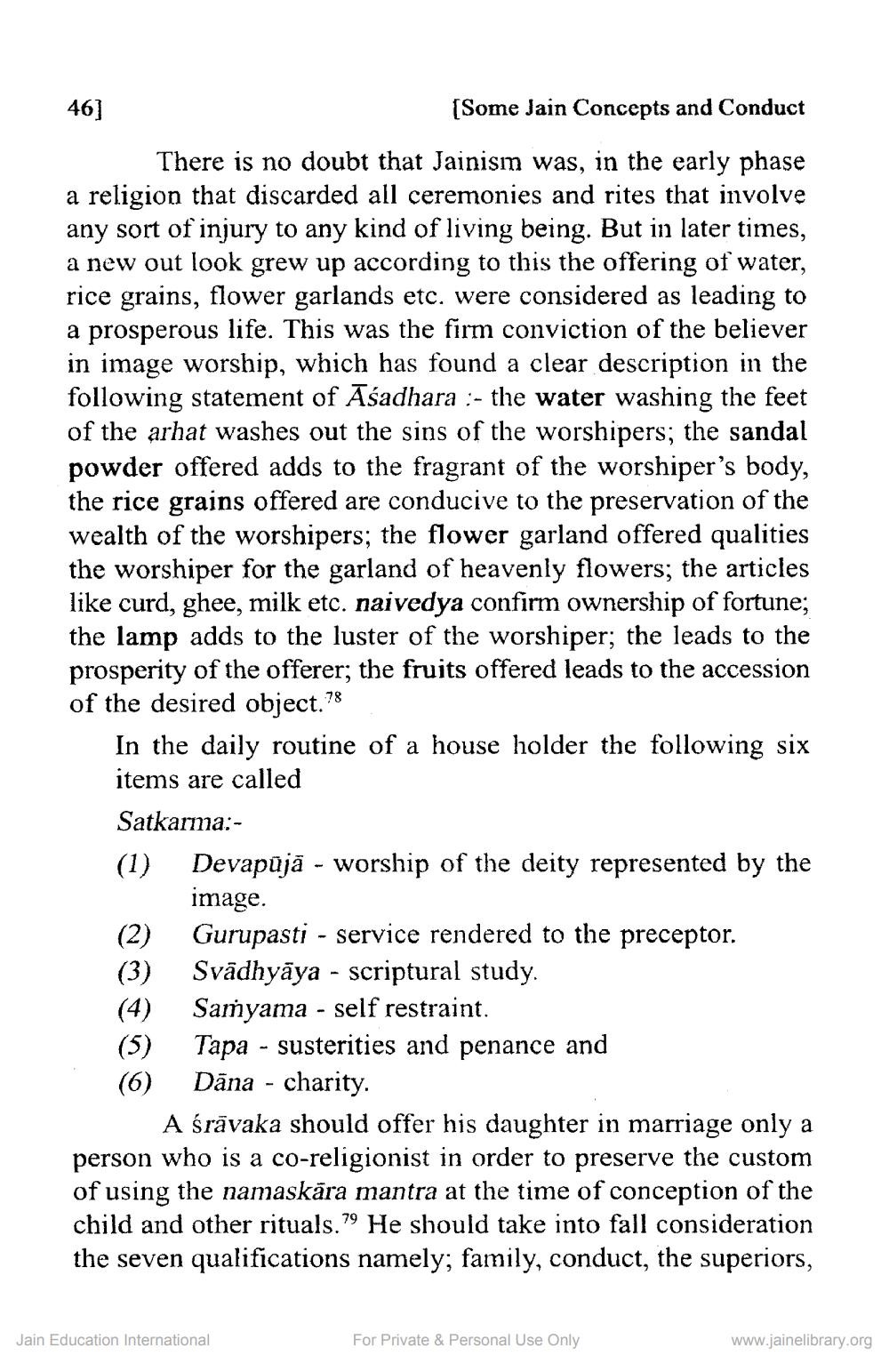________________
[Some Jain Concepts and Conduct
There is no doubt that Jainism was, in the early phase a religion that discarded all ceremonies and rites that involve any sort of injury to any kind of living being. But in later times, a new out look grew up according to this the offering of water, rice grains, flower garlands etc. were considered as leading to a prosperous life. This was the firm conviction of the believer in image worship, which has found a clear description in the following statement of Asadhara :- the water washing the feet of the arhat washes out the sins of the worshipers; the sandal powder offered adds to the fragrant of the worshiper's body, the rice grains offered are conducive to the preservation of the wealth of the worshipers; the flower garland offered qualities the worshiper for the garland of heavenly flowers; the articles like curd, ghee, milk etc. naivedya confirm ownership of fortune; the lamp adds to the luster of the worshiper; the leads to the prosperity of the offerer; the fruits offered leads to the accession of the desired object.78
46]
In the daily routine of a house holder the following six items are called
Satkarma:
(1)
Devapūjā - worship of the deity represented by the
image.
Gurupasti - service rendered to the preceptor.
(2)
(3) Svadhyāya - scriptural study. Samyama - self restraint.
(4)
(5) Tapa - susterities and penance and
(6)
Dana - charity.
A śrävaka should offer his daughter in marriage only a person who is a co-religionist in order to preserve the custom of using the namaskāra mantra at the time of conception of the child and other rituals.79 He should take into fall consideration the seven qualifications namely; family, conduct, the superiors,
Jain Education International
For Private & Personal Use Only
www.jainelibrary.org




